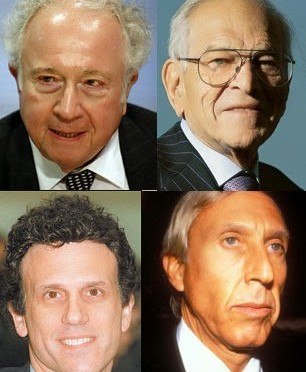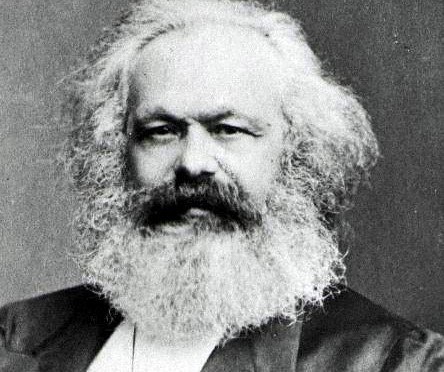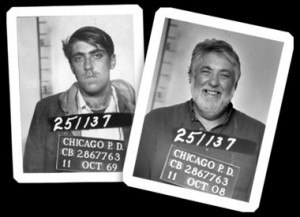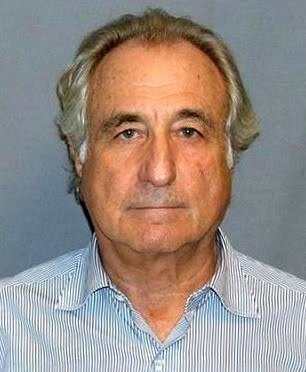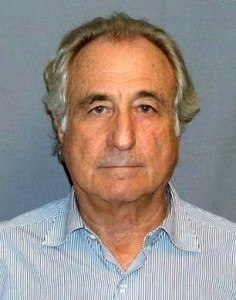Podcast: Play in new window | Download
We’re going to decode this term and a few others for the goyim.
It is a perfectly normal reaction for Whites to find Yiddish or Hebrew off-putting, alienating. It’s natural to interpret such words as, “not for me”, and get the urge to go read or listen to something else. The author or speaker who chooses such words, rather than plain English, is sending a signal, expressing their jewishness. And when you perceive jews as the enemy, the disgust and urge to ignore any thought or argument coming from a jewish point of view becomes even stronger.
Regardless of how you might perceive the jews, what I intend to do here is make the case that the jews see the non-jews around them as their enemies. Any form of codespeak would be an indication of this – but the term “shanda fur die goyim” really puts a point on it.
First, let’s review some of the superficial explanations that jews themselves provide.
Shame on you for not knowing what “shanda” means!
“shanda” is the Yiddish word for “shame, disgrace, disgusting”
. . .
And not knowing what “shanda” means is a double shanda!!
So shanda is a code word, in that most non-jews don’t know it, though it’s relatively well understood among jews. The scandal, for a jew, is in not knowing that code word.
I found these “Instant Yiddish” pages using a search engine. They’re buried on the personal web site of some jew named Joel Aronson, not linked from the home page or site map. All you can gather from the surface is that Aronson is a photographer who graduated from James Madison High School in Brooklyn in 1955. But based on the names of his classmates, the school must have been full of jews.
The point is that Aronson doesn’t come right out and advertise himself as a jew – in fact, he likely hides the yiddish pages from sight exactly because it is such a definitive marker of jewishness. When I was growing up in New York I had a math teacher named Aronson – he was quirky, even spastic. It never occurred to me then that it was because he was a jew. I wonder now how many yiddish terms he sprinkled in his lessons, or conversations with other teachers, sending the signal, “I’m a jew”, mainly heard only by other jews.
I found another definition buried on the web site of the Santa Barbara Jewish Connection, Yiddish Phrases:
SHANDA: A shame, a scandal. The expression “a shanda fur die goy” means to do something embarrassing to Jews where non-Jews can observe it.
The subtitle of the page is: “The First Words You Learn”, with shanda being one of about 150 of the more common bits of jewish code. The scandal is not “for the goyim”, but for the jews in front of the goyim.
The usual jew cover story is that goy/goyim mean nation/nations. In practice, however, it means Them, the Other, and it has a distinct pejorative sense. Gentile is a synonym with a less disparaging, derogatory sense, but the point is that the very existence of these words indicates that jews see a clear distinction between themselves and Others, between jew and goy.
The classic example of the distinction is in the yiddish phrases yiddische kopf (jew head, smart) and goyische kopf (non-jew head, stupid).
Thought Catalog, which on the surface is not any more of a jewish site than say The New Republic or Slate, has a page titled 61 Hilarious Yiddish Insults You Need To Know:
51. Shanda: A scandal. … If you have a “shanda fur die goy,” that means that you fuck up in front of non-Jews, thus embarrassing your entire people. This is obviously not good.
Obviously not good for the jews.
Usually the term is only used by jews talking to other jews. Even when overheard it’s easy to misunderstand. You might take it to mean that jews feel bad about non-jews being harmed. That’s not it at all. It means they feel bad because they think it might cause jews harm, that whatever the scandal is might be bad for the jews.
A certain ambiguity is characteristic of yiddish. As programmers say: This is a feature, not a bug. It is a consequence of jewish crypsis, being furtive and secretive. Even when jews stop trying to hide their alien code and instead try to explain the significance of certain words, or the language itself, you must remain skeptical, cynical, and read between the lines.
A good example comes from The Daily Beast, a really jewy digital tabloid. Mazel Tov, Arvind! But Are You Sure It’s Not Kneydl?
The article highlights jewishness, their sense of Otherness, and how it is expressed via yiddish. The jew author absolutely revels in it. He recounts how an Indian kid won a spelling bee in the US by spelling this yiddish word kneydl. The joke is that yiddish is notorious for variations in spelling.
The jew provides the usual cover story. Jews just can’t agree, have no central authority – the old “two jews, three opinions” nonsense. That’s part of it, but it leaves out the most important facts.
The fact is that yiddish always has and continues to effectively serve as a code language. From a non-jew perspective the many variations in spelling make it harder to pin down, harder to search, though the internet makes it much easier than it ever would have been in the past.
Yiddish is so informal and quirky for the simple reason that it has almost entirely been passed down verbally, via jew to jew personal interaction. The jews did this on purpose, rather than writing books about it, though they very well could have, as they have done with every other imaginable subject.
As it turns out I did find a book specifically about yiddish. The exception proves the rule.
Dictionary of Yiddish Slang and Idioms, by Fred Kogos, published 1968 by Kensington Publishers:
When Hitler killed 6,000,000 Yiddish-speaking jews and when Israel proclaimed Hebrew was to be the official tongue of the nation, these actions spelled the death kneel [sic] of Yiddish.
Hebrew is spoken only by about 2,000,000 people in Israel, and a few abroad, while Yiddish is still spoken by, and known to, over 10,000,000 throughout the world! Yiddish is creeping into the English language more startlingly than is apparent, with even Webster’s Third International Dictionary containing over 500 Yiddish (and some Hebrew) words.
Kogos claims his book spells out Yiddish words for “the first time in Roman letters”, implying it had previously always been written in Hebrew characters – more evidence that jews intended to keep it to themselves.
Kogos claims its beginnings go back to the 11th century, that the “principle parent” is Middle High German with some influence from English, Hebrew, Russian and Polish, and that there are 4 major dialects: “Lithuanian, Ukrainian (Galicia), Polish, and Western (German)”.
The bulk of the book is omitted from Google books, including the entry for shanda.
Regarding “Kensington Publishers”. It doesn’t look like it, but Kensington is another code word.
The original Kensington is an area of West London.
It is also “a small and easily overlooked neighborhood of Brooklyn” which “has long had a vibrant Jewish community”.
It might also refer to Kensington Market, a neighborhood in Toronto that became known as “the jewish market” after waves of jews colonized it in the early 20th century.
“Since the 1970s, the city has been home to the largest Jewish population in Canada and become a centre of Jewish Canadian culture.” In other words, the largest colony of jews in Canada is in Toronto, and Kensington is the historic epicenter of the colony of jews in Toronto.
Kensington is an example of jews creating a ghetto and segregating themselves – counter to the usual jewish narrative that jews were forced to live in ghettos by others.
The Schmooze, by some old jewess, It’s a Shanda:
In Yiddish, “shanda”/”shande” means “shame.” And “shande far di kinder” means, literally, “a disgrace for the children.”
Arthur Naiman writes about the expression, “a shanda fur die goyim”: “To make a shanda fur die goyim is to do something embarrassing to Jews in a place where non-Jews can observe it. Understandably, this is looked on with much greater disfavor than to act like a jerk when only other Jews are around, since it makes things tougher on all of us–“Those damned Jews! See what they’re like.”
The old jewess provides examples, including “Madoff – the ‘ganef'”, “Jack Abramoff – convicted of mail fraud, conspiracy to bribe public officials, and tax evasion” and,
Selling organs is a “shande”
She cites some jew who suggested Anthony Weiner and Eliot Spitzer get out of politics in an article titled:
“The Shanda Factor: What makes Jewish sex scandals different?”
For much of his career, Spitzer was a source of pride to Jews, with some supporters referring to him as having the potential to become the first Jewish president. In the blogosphere ethnic pride, when the scandal broke, the Web site, Gawker, proclaimed it’s a “shanda fur die Goyim.
When the jewish university Brandeis granted Tony Kushner an honorary doctorate some outraged jew wrote:
Tony Kushner is an anti-Zionist self hating shatdlan who never had a moral compass even in his genes nor has he any sense of Yiddishkeit. Brandeis has committed a SHANDE.
Yiddishkeit means “jewishness”, “jewish way of life”, “jewish essence” – or yiddishness. It is typified by jews moaning about a shanda or oy veying about something or other.
We find more about the essence of jewishness at yiddishkayt.org which greets visitors with the slogans “OPEN YOUR BORDERS” and “SHAKE UP YOUR PERSPECTIVE”. To them yiddishkayt means “the culture, language, art, and worldviews of Eastern European Jews”.
Shanda fur di Goyim! appeared in the e-newsletter ‘Keeping Our Families Jewish’, by Doron Kornbluth:
As if Bernie Madoff wasn’t enough. And as if Jack Abramowitz wasn’t enough. And as if riots in Jerusalem weren’t enough. Now we have a group of very religious looking Jews being handcuffed by the FBI in a massive fraud case that has brought down three mayors and scores of lawmakers and politicos in New Jersey.
The Yiddish phrase “Shanda fur di goyim” refers to (Jewish) embarrassment at a fellow Jew doing something Really Bad in front of non-Jews. In other words, don’t wash your dirty linen in public. Do we have problems? Of course. There have always been problems. But, the phrase suggests, be careful: the world tends to look at “the Jews” as one people and what one Jew does reflects well – or badly – on the rest of us. According to this idea, doing something bad is bad enough, but it becomes much worse when it reflects badly on the entire Jewish people.
How do you feel about this phrase? Does it still apply? Does the world still “clump us together”? I’ll leave it to you to decide.
In a sense, though, today the discussion may be academic. With modern technology, word gets out. Even if we wanted to wash our dirty linen in private – ie within the Jewish community – it isn’t really possible anymore anyway. The events mentioned above were on the news again, and again, and again. Specifically, the visuals of religious-looking Jews being violent or in custody are hard to avoid or forget.
Right. When the jews can’t hide what they’re doing, they switch to “explaining”.
Note the inversion. It is the jews who see themselves and act as one people more than anyone else. When jews fret about a “shanda fur die goyim” what they’re worrying about is that the goyim might catch on to their game and also see the jews as a group, maybe even punish them as a group, or organize their own groups.
Madoff and “Abramowitz” (Abramoff) loom large as recent examples of shanda fur die goyim. What triggered this article was the Bid Rig scandal, in 2009, when the FBI arrested a ring of orthodox jews in New York/New Jersey area.
Bid Rig also touched on the organ selling shanda the old jewess mentioned.
In Jews and Organ Transplants – Part 1 I discussed the minor “embarassment” that the orthodox jews take organs but don’t donate them. By Part 3 I described the deeper concern:
Shanda fur die goyim is misunderstood as embarassment. It is a reflection of jewish sensitivity to collective exposure/responsibility/vulnerability. It is an alarm, a call for the making of excuses and transferring of blame elsewhere. The most extreme and common example is how jews transfer blame to “anti-semitism”.
What’s going on it isn’t simply “organ trafficking”. There’s extortion of organs from misled and desperate victims, reselling them at enormous profit. And it’s all very jewy – jew patients, jew doctors, and jew brokers. It goes on, even though it’s illegal, because there are so many jews involved, because the jews won’t rat out each other, and because most of the time nobody else will dare prosecute any of them, even when they are caught red-handed. The cherry on top is that yet more jews are pushing to legalize the harvesting and selling of organs for profit.
Returning to Bernie Madoff – “the ganef”, also spelled gonef or gonif, which means thief, swindler, crook – an unscrupulous opportunist who stoops to sharp practice. It specifically means a jewish thief, or one who steals from jews. The use of the yiddish word implies “from a jewish point of view”, otherwise the English words would suffice.
An example of its use occurs in Michael Tomasky’s A Short Post About Jesse Jackson Jr at The Daily Beast:
I’m going to write this just so our conservative friends can’t say I brush these things under the rug. He’s clearly a troubled man, but he’s also a gonif and a loser, so good riddance to him. All right?
Tomasky is a “liberal” (somewhat ambiguous) jew sending a subtle signal here to “conservative” jews.
Bernie Madoff was a Wall Street insider:
a past chairman of the board of directors of the Nasdaq Stock Market as well as a member of the board of governors of the National Association of Securities Dealers and a member of numerous committees of the organization
Madoff was a money manager since 1960. For decades he ran a pyramid scheme informally known as The Jewish Bond. It was very exclusive, “invite only”, operated by and benefitting a tight circle of jewish family and friends, and servicing a clientele that was also glaringly jewish, many of whom assumed Madoff was cheating in some way, perhaps using his insider knowledge and access.
One of the main takeaways is that the scheme went on for nearly two decades before collapsing. It was not stopped by regulators or lawmen, despite suspicions and accusations expressed over the years. As with the organ “business”, the very obvious jewishness of the phenomenon seemed to create a protective bubble.
Another takeaway was the revelation of just how much jewish “philanthropy” money is sloshing around Wall Street, and how much of that “philanthropy” is actually dedicated to exclusively jewish causes.
When Madoff saw his pyramid scheme was collapsing he tried to take all the blame on himself, probably to protect his family and friends who were in the scheme up to their eyeballs. He turned himself in, called it “one big lie”, and claimed nobody else knew. There’s alot more to the story.
The collapse of this big jew’s jewish bond was an epic shanda fur die goyim. The jew cover story is that “Most of Madoff’s victims were charitable organizations, elderly people, and Jews.” – i.e. jews were victims, rather than perpetrators. This narrative traces back to a NYMag story that appeared only one week after Madoff’s arrest and prevails at Wikipedia and beyond to this day, despite the many revelations which contradict it. Jews got in on the ground floor of the scheme and in many cases pulled out far more than they put in. Their losses were largely imaginary. The biggest losers were the faceless non-jew corporations, municipalities, and feeder funds that got in late in the game.
There are lots of other examples of shanda for die goyim.
Dominique Strauss-Kahn , Jonathan Pollard (and other jewish spies), Greville Janner, Jeffrey Epstein and Alan Dershowitz, to name a few.
A comment on a jewsmedia article about Dershowitz notes, “If this isn’t an example of “shanda fur die goyim,” I don’t know what is!!”
In conclusion, keep in mind that the use of yiddish by jews is a clear expression not only of their Otherness, but their consciousness of that Otherness. It also indicates the asymmetry of this consciousness. Non-jews generally aren’t aware not only of the meaning of invididual words and phrases but are missing the larger picture – that the jews use yiddish as codespeak, to signal and communicate specifically jewish concerns to other jews.
In a “liberal” society, where we are all supposed to be one big US, the mere existence of the term “shanda for die goyim” is evidence of bad faith, evidence that the worldview of jews is actually in terms of US jews versus THEM goyim. They are fully conscious of this and that it would be bad for the jews if the goyim knew and acted on such a worldview as well.
There is no simple equivalent for the term in English. It is difficult to translate because jewish attitudes are so different.
Basically, it is yet another example of jews expressing their utmost concern for their own group. In this case the main concern is exposure, exposure of harm caused by jews, evidence of jewish parasitism, especially their manipulation or exploitation of non-jews.
The main desire of jews is not to stop the harm or even punish the jews who are most responsible, but to somehow stop the exposure, to stop any harm coming to jews. That’s what “shanda fur die goyim” means. It means, transfer the blame elsewhere. It means, bury it. It means, shut it down.
UPDATE 10 July 2017: 47 Reasons to Love New York, Right Now, More Than Ever:
Ruth Bader Ginsburg (class of ’50), Bernie Sanders (’59), and Chuck Schumer (’67) all wrote for the newspaper at James Madison High School


